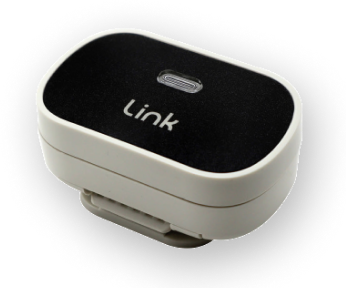As a pet parent, the idea of losing your pet is probably one of the worst things imaginable. If your dog is an escape artist who has gotten out of where he’s supposed to be, or you’ve had a dog find a way out of your backyard or even off his leash, then you know how terrifying it can be.
GPS trackers for dogs are made with this exact fear in mind, helping pet parents like yourself feel confident knowing they can always track their dog’s location through an app. But, how exactly does GPS pet tracking work?
When shopping for a GPS pet tracker, you’ll probably come across information about signing up for a cellular plan for the device to work, but if the tracker uses GPS, then why do you need a data plan? And how does the device use data and GPS and Bluetooth?
We know the technology can get confusing, so we’ve broken down exactly how GPS pet trackers work. We promise not to get too tech heavy! Let’s get started with a short lesson on GPS.
What is GPS?
![]() First things first, let’s talk about GPS, which stands for global positioning system. Orbiting the earth right now are 31 operational GPS satellites beaming down their location to GPS receivers all around the world. Your phone, GPS pet trackers like the Link Plus, and other GPS devices can quickly tap into those beams of information.
First things first, let’s talk about GPS, which stands for global positioning system. Orbiting the earth right now are 31 operational GPS satellites beaming down their location to GPS receivers all around the world. Your phone, GPS pet trackers like the Link Plus, and other GPS devices can quickly tap into those beams of information.
For a GPS device to know its location, it has to tap into at least four GPS satellites. Why? Well, think about it this way: if you were in the middle of the desert with absolutely nothing around you, but you were able to determine how far away you were from four known landmarks, then you’d be able to figure out your exact location.
But here’s the catch – GPS satellites can’t easily send information through solid objects. So, trees, buildings and other structures can get in the way of the GPS satellite being able to tell a GPS device exactly where it’s at. That’s why a GPS device has to rely on multiple satellites to figure out its location.
Why Do I Need a Data Plan for My GPS Pet Tracker?
![]() Now that you’ve got a basic understanding of how GPS works, your next question might naturally be, “So, what’s up with the data plan?” A data plan is essential for a GPS pet tracker because once the GPS receiver pinpoints its location, it has to send that information to you somehow.
Now that you’ve got a basic understanding of how GPS works, your next question might naturally be, “So, what’s up with the data plan?” A data plan is essential for a GPS pet tracker because once the GPS receiver pinpoints its location, it has to send that information to you somehow.
That’s where the data plan comes into play. You know how you need a data plan for a tablet or cellphone to access the internet without Wi-Fi? Well, your GPS pet tracker needs a data plan to send your phone information about its location, which it receives from GPS or Bluetooth (more on Bluetooth later).
So, let’s put that into a real-life scenario with the Link Plus. Your dog has just escaped. The Link Plus notices he’s out of his designated Bluetooth safe zone, so the GPS function turns on and begins to receive information from GPS satellites to figure out where your dog is at. All that information is sent from the Link Plus device to your cell phone via the AT&T network because you’ve signed up for a data plan for your Link Plus device.
Where Does Bluetooth Come Into the Picture?
That scenario we just described uses a lot of battery power. Between constantly tapping into multiple GPS satellite beams to update the moving location, to sending that updated location to your mobile device, a GPS pet tracker needs a lot of juice to do all that work. And since GPS pet trackers need to be small in order to fit comfortably on your pet, they can’t hold big, powerful batteries.
So when your dog is chillin’ at home, safe and sound, there’s no need for all that battery power. Instead, the GPS pet tracker uses Bluetooth connectivity to let you know his location. The GPS pet tracker sends information back and forth between the base station using Bluetooth. Once your pet leaves that Bluetooth safe zone, the device recognizes this as a sign of trouble and turns on the GPS.
Again, that information has to be sent to your phone somehow, so unless you’re connected to Wi-Fi, the device will tap into a cellular network to make sure you have up-to-the-minute location and activity information for your pet.
Key Takeaways
Whew! That was a lot of information. So, let’s take a look at the major points one more time.
- GPS devices like the Link Plus get their location information from multiple satellites orbiting the earth.
- GPS pet trackers have to send location information to a phone using cellular data, hence the necessity of a service/data plan.
- Active GPS tracking uses a lot of battery, so when your pup is safe at home, your GPS pet tracker connects to Bluetooth




